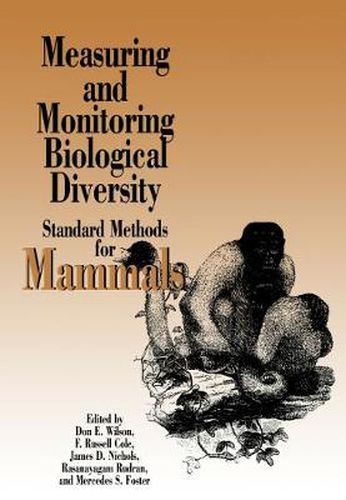Readings Newsletter
Become a Readings Member to make your shopping experience even easier.
Sign in or sign up for free!
You’re not far away from qualifying for FREE standard shipping within Australia
You’ve qualified for FREE standard shipping within Australia
The cart is loading…






Measuring and Monitoring Biological Diversity: Standard Methods for Mammals provides a comprehensive manual for designing and implementing inventories of mammalian biodiversity anywhere in the world and for any group, from rodents to open-country grazers. The book emphasizes formal estimation approaches, which supply data that can be compared across habitats and over time. Beginning with brief natural histories of the twenty-six orders of living mammals, the book details the field techniques-observation, capture, and sign interpretation-appropriate to different species. The contributors provide guidelines for study design, discuss survey planning, describe statistical techniques, and outline methods of translating field data into electronic formats. Extensive appendixes address such issues as the ethical treatment of animals in research, human health concerns, preserving voucher specimens, and assessing age, sex, and reproductive condition in mammals.
Useful in both developed and developing countries, this volume and the Biological Diversity Handbook Series as a whole establish essential standards for a key aspect of conservation biology and resource management.
$9.00 standard shipping within Australia
FREE standard shipping within Australia for orders over $100.00
Express & International shipping calculated at checkout
Measuring and Monitoring Biological Diversity: Standard Methods for Mammals provides a comprehensive manual for designing and implementing inventories of mammalian biodiversity anywhere in the world and for any group, from rodents to open-country grazers. The book emphasizes formal estimation approaches, which supply data that can be compared across habitats and over time. Beginning with brief natural histories of the twenty-six orders of living mammals, the book details the field techniques-observation, capture, and sign interpretation-appropriate to different species. The contributors provide guidelines for study design, discuss survey planning, describe statistical techniques, and outline methods of translating field data into electronic formats. Extensive appendixes address such issues as the ethical treatment of animals in research, human health concerns, preserving voucher specimens, and assessing age, sex, and reproductive condition in mammals.
Useful in both developed and developing countries, this volume and the Biological Diversity Handbook Series as a whole establish essential standards for a key aspect of conservation biology and resource management.